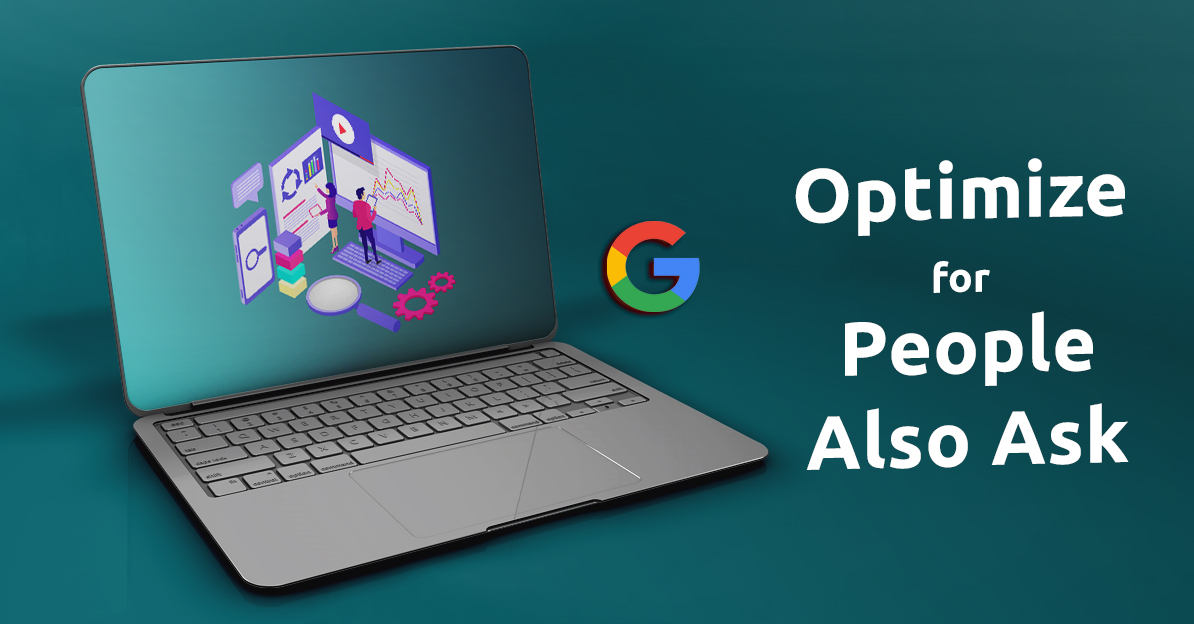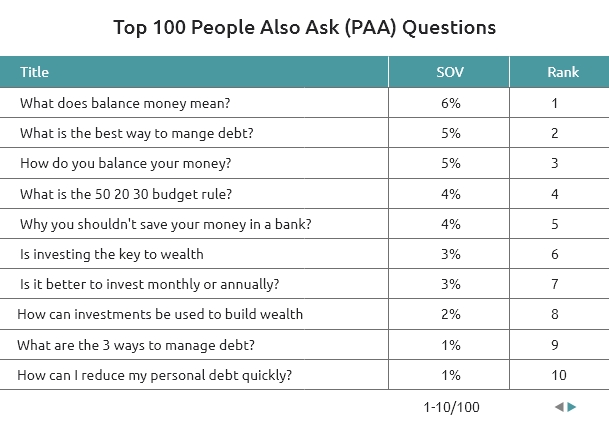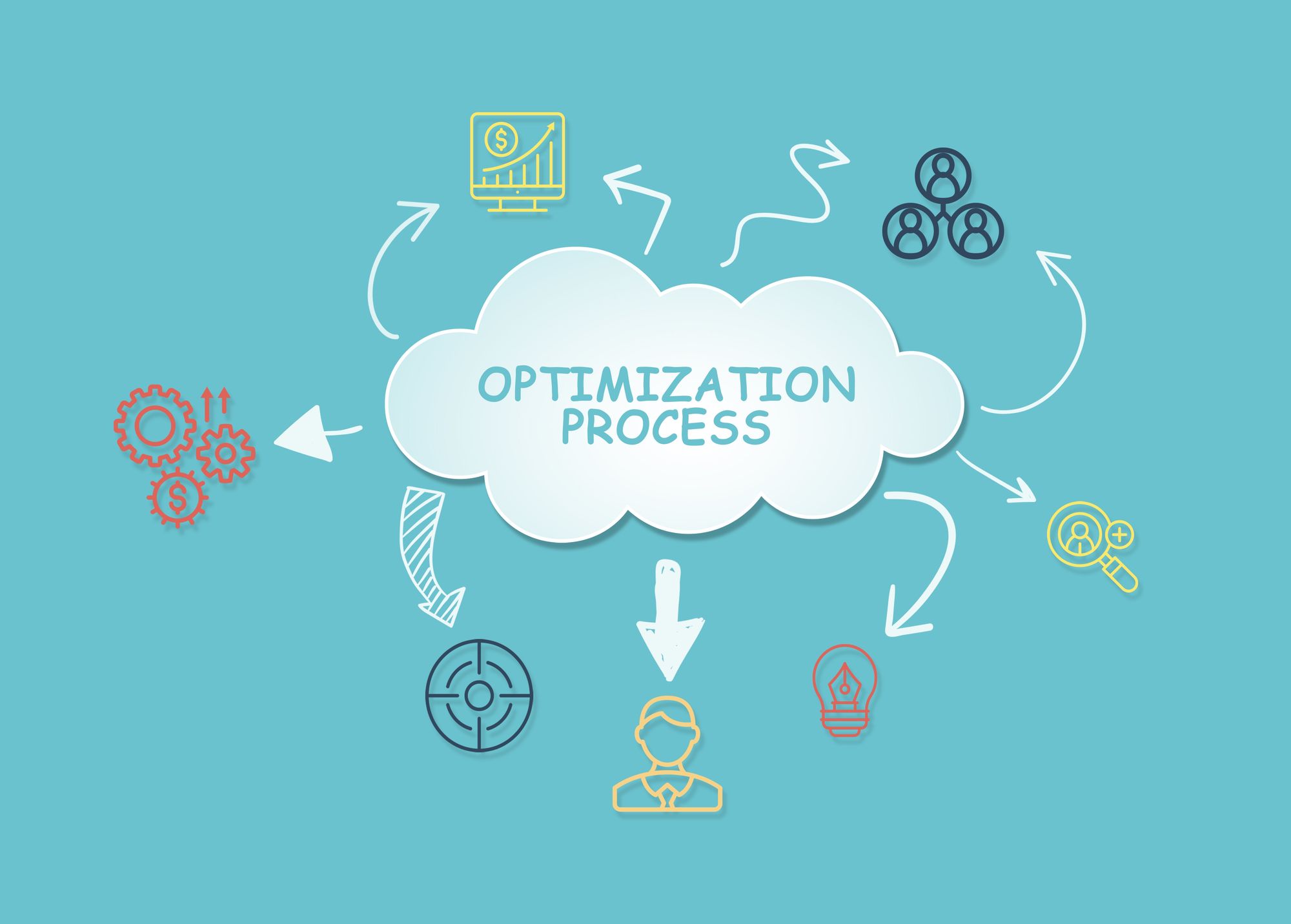Unlocking the Power of People Also Ask
People Also Ask (PAA) is a feature in Google’s search engine results pages (SERPs) that provides users with additional questions related to their original search query. By optimizing for PAA, website owners can improve their online visibility, drive more traffic, and increase engagement. In fact, studies have shown that PAA can increase click-through rates by up to 30% and boost conversions by up to 25%. To tap into this potential, it’s essential to understand how to optimize for people also ask.
The PAA feature is designed to help users find more relevant information and answers to their questions. By providing users with additional questions and answers, Google aims to improve the overall search experience and reduce the need for multiple searches. For website owners, this means that optimizing for PAA can help them reach a wider audience and increase their online presence.
One of the key benefits of optimizing for PAA is that it allows website owners to target long-tail keywords and phrases. By targeting these keywords, website owners can attract more specific and relevant traffic to their site, increasing the chances of conversion. Additionally, optimizing for PAA can help website owners to improve their brand visibility and establish themselves as authorities in their industry.
So, how can you optimize for people also ask? The first step is to understand the types of questions that people are asking. By using tools such as Google Keyword Planner and SEMrush, you can identify the most common questions and phrases related to your industry. From there, you can create content that answers these questions and provides value to your users.
Another key strategy for optimizing for PAA is to use structured data. By using schema markup, you can provide search engines with additional context about your content, making it more likely to appear in PAA results. Additionally, using structured data can help you to improve your website’s overall visibility and drive more traffic to your site.
By optimizing for people also ask, website owners can improve their online visibility, drive more traffic, and increase engagement. By understanding the types of questions that people are asking and creating content that answers these questions, website owners can establish themselves as authorities in their industry and attract more specific and relevant traffic to their site.
Understanding the Intent Behind People Also Ask
When it comes to People Also Ask (PAA), understanding the intent behind the questions is crucial to creating effective content that resonates with users. By delving into the psychology behind PAA, you can gain valuable insights into the types of questions people ask and the intent behind them.
Research has shown that people ask questions for a variety of reasons, including to seek information, to clarify doubts, or to make informed decisions. By understanding these motivations, you can create content that addresses the specific needs and concerns of your target audience.
One way to understand user intent is to analyze the types of questions people ask. For example, questions that start with “what,” “how,” or “why” often indicate a desire for information or clarification. On the other hand, questions that start with “where” or “when” often indicate a desire for specific details or directions.
Another way to understand user intent is to look at the language and tone used in the questions. For example, questions that use formal language may indicate a desire for authoritative information, while questions that use informal language may indicate a desire for conversational or opinion-based content.
By understanding user intent, you can create content that is tailored to the specific needs and concerns of your target audience. This can help you to increase engagement, drive more traffic, and improve your online visibility. For example, if you’re creating content that targets PAA queries, you can use question-based headlines and concise answers to provide users with the information they need.
In addition, understanding user intent can help you to avoid common mistakes when optimizing for PAA. For example, if you’re creating content that is too promotional or sales-y, you may be neglecting the user’s intent and failing to provide them with the information they need. By focusing on the user’s intent and creating content that addresses their specific needs and concerns, you can create high-quality content that resonates with users and improves your online visibility.
By incorporating user intent into your content strategy, you can take your PAA optimization efforts to the next level and create content that truly resonates with your target audience. Whether you’re creating new content or optimizing existing content, understanding user intent is key to creating effective content that drives results.
Keyword Research Strategies for People Also Ask
Conducting keyword research is a crucial step in optimizing for People Also Ask (PAA). By identifying the right keywords and phrases, you can create content that targets the specific needs and concerns of your target audience. In this section, we’ll explore some tips and techniques for conducting keyword research that targets PAA queries.
One of the most effective ways to conduct keyword research for PAA is to use long-tail keywords. Long-tail keywords are phrases that are more specific and less competitive than generic keywords. For example, instead of targeting the keyword “insurance,” you could target the long-tail keyword “how to get cheap car insurance.” By targeting long-tail keywords, you can create content that is more relevant and useful to your target audience.
Another effective way to conduct keyword research for PAA is to use question keywords. Question keywords are phrases that are phrased as questions, such as “what is the best way to lose weight?” or “how to optimize for people also ask.” By targeting question keywords, you can create content that directly answers the questions and concerns of your target audience.
Semantic search is also an important consideration when conducting keyword research for PAA. Semantic search refers to the way that search engines understand the context and intent behind a search query. By using semantic search techniques, such as latent semantic analysis (LSA) and latent Dirichlet allocation (LDA), you can create content that is more relevant and useful to your target audience.
Tools such as Google Keyword Planner, Ahrefs, and SEMrush can also be used to conduct keyword research for PAA. These tools provide insights into search volume, competition, and suggested bid, which can help you to identify the most effective keywords and phrases for your content.
When conducting keyword research for PAA, it’s also important to consider the intent behind the search query. By understanding the intent behind the search query, you can create content that is more relevant and useful to your target audience. For example, if the search query is “how to optimize for people also ask,” the intent behind the query is likely to learn more about optimizing for PAA.
By incorporating these keyword research strategies into your content optimization efforts, you can create content that is more relevant and useful to your target audience. Remember to always keep your target audience in mind and to create content that is informative, engaging, and optimized for PAA.
Optimizing Your Content for People Also Ask
Optimizing your existing content for People Also Ask (PAA) is a crucial step in improving your website’s visibility and driving more traffic. By making a few simple changes to your content, you can increase the chances of your content appearing in PAA results. In this section, we’ll explore some tips and techniques for optimizing your content for PAA.
One of the most important things to consider when optimizing your content for PAA is the use of clear headings. Clear headings help search engines understand the structure and content of your page, making it more likely to appear in PAA results. Use headings such as H1, H2, and H3 to break up your content and highlight key points.
Concise answers are also essential when optimizing for PAA. Search engines favor content that provides direct and concise answers to user queries. Make sure your content is easy to read and understand, and that you’re providing clear and concise answers to the questions being asked.
Relevant internal linking is also important when optimizing for PAA. Internal linking helps search engines understand the relationships between different pages on your website, making it more likely to appear in PAA results. Use internal linking to connect related pages and provide users with more information on a particular topic.
Another important consideration when optimizing for PAA is the use of question-based subheadings. Question-based subheadings help search engines understand the content and structure of your page, making it more likely to appear in PAA results. Use question-based subheadings to break up your content and highlight key points.
Finally, make sure your content is optimized for user experience. Search engines favor content that provides a good user experience, making it more likely to appear in PAA results. Use clear and concise language, and make sure your content is easy to read and understand.
By following these tips and techniques, you can optimize your existing content for PAA and improve your website’s visibility. Remember to always keep your target audience in mind and to create content that is informative, engaging, and optimized for PAA.
Additionally, you can also use tools such as Google Search Console and SEMrush to analyze your website’s performance and identify areas for improvement. These tools can help you to identify which pages are appearing in PAA results and which keywords are driving the most traffic to your website.
By optimizing your content for PAA, you can increase the chances of your content appearing in PAA results and drive more traffic to your website. Remember to always keep your target audience in mind and to create content that is informative, engaging, and optimized for PAA.
Creating New Content that Targets People Also Ask
Creating new content that specifically targets People Also Ask (PAA) queries is a great way to improve your website’s visibility and drive more traffic. By creating content that directly answers the questions and concerns of your target audience, you can increase the chances of your content appearing in PAA results.
One of the most important things to consider when creating new content for PAA is the use of question-based headlines. Question-based headlines help search engines understand the content and structure of your page, making it more likely to appear in PAA results. Use question-based headlines to break up your content and highlight key points.
Detailed answers are also essential when creating new content for PAA. Search engines favor content that provides direct and detailed answers to user queries. Make sure your content is easy to read and understand, and that you’re providing detailed answers to the questions being asked.
Engaging formats like lists and tables can also help to make your content more appealing to users and search engines. Use lists and tables to break up your content and highlight key points, making it easier for users to scan and understand.
Another important consideration when creating new content for PAA is the use of semantic search techniques. Semantic search techniques help search engines understand the context and intent behind a search query, making it more likely to appear in PAA results. Use semantic search techniques like latent semantic analysis (LSA) and latent Dirichlet allocation (LDA) to create content that is more relevant and useful to your target audience.
When creating new content for PAA, it’s also important to consider the user experience. Search engines favor content that provides a good user experience, making it more likely to appear in PAA results. Use clear and concise language, and make sure your content is easy to read and understand.
By following these tips and techniques, you can create new content that specifically targets PAA queries and improves your website’s visibility. Remember to always keep your target audience in mind and to create content that is informative, engaging, and optimized for PAA.
Additionally, you can also use tools like Google Trends and Answer the Public to find inspiration for new content ideas that target PAA queries. These tools can help you to identify popular topics and questions that are relevant to your target audience.
By creating new content that targets PAA queries, you can increase the chances of your content appearing in PAA results and drive more traffic to your website. Remember to always keep your target audience in mind and to create content that is informative, engaging, and optimized for PAA.
Using Structured Data to Enhance People Also Ask Visibility
Structured data is a crucial component of search engine optimization (SEO) that can help enhance the visibility of your content in People Also Ask (PAA) results. By providing search engines with additional context about your content, you can increase the chances of your content appearing in PAA results.
One of the most effective ways to use structured data to enhance PAA visibility is to use schema markup. Schema markup is a type of microdata that provides search engines with additional context about your content, such as the title, description, and keywords. By using schema markup, you can help search engines understand the content and structure of your page, making it more likely to appear in PAA results.
Another way to use structured data to enhance PAA visibility is to use JSON-LD. JSON-LD is a type of structured data that provides search engines with additional context about your content, such as the title, description, and keywords. By using JSON-LD, you can help search engines understand the content and structure of your page, making it more likely to appear in PAA results.
When using structured data to enhance PAA visibility, it’s essential to ensure that your markup is accurate and consistent. This means using the correct schema markup or JSON-LD syntax and ensuring that your markup is up-to-date and relevant to your content.
Additionally, you can also use tools like Google’s Structured Data Markup Helper to help you create and implement structured data on your website. This tool provides a simple and easy-to-use interface for creating and testing structured data markup.
By using structured data to enhance PAA visibility, you can increase the chances of your content appearing in PAA results and drive more traffic to your website. Remember to always keep your target audience in mind and to create content that is informative, engaging, and optimized for PAA.
It’s also important to note that structured data is not a replacement for high-quality content. While structured data can help enhance the visibility of your content, it’s essential to ensure that your content is well-written, informative, and engaging.
By combining structured data with high-quality content, you can create a powerful SEO strategy that drives more traffic and engagement to your website. Remember to always keep your target audience in mind and to create content that is informative, engaging, and optimized for PAA.
Measuring and Tracking People Also Ask Performance
Measuring and tracking the performance of your People Also Ask (PAA) optimization efforts is crucial to understanding the effectiveness of your strategy. By monitoring keyword rankings, search volume, and user engagement metrics, you can gain valuable insights into how your content is performing and make data-driven decisions to improve your PAA optimization efforts.
One of the most important metrics to track when optimizing for PAA is keyword rankings. By monitoring your keyword rankings, you can see how your content is performing in search engine results pages (SERPs) and identify areas for improvement. Use tools like Google Search Console or SEMrush to track your keyword rankings and adjust your PAA optimization strategy accordingly.
Search volume is another important metric to track when optimizing for PAA. By monitoring search volume, you can see how many people are searching for specific keywords and phrases, and adjust your PAA optimization strategy to target high-volume keywords. Use tools like Google Keyword Planner or Ahrefs to track search volume and identify high-volume keywords to target.
User engagement metrics, such as click-through rate (CTR) and time on page, are also important to track when optimizing for PAA. By monitoring user engagement metrics, you can see how users are interacting with your content and identify areas for improvement. Use tools like Google Analytics to track user engagement metrics and adjust your PAA optimization strategy accordingly.
Additionally, you can also use tools like Google Trends and Answer the Public to track the performance of your PAA optimization efforts. These tools provide valuable insights into how your content is performing and can help you identify areas for improvement.
By tracking and measuring the performance of your PAA optimization efforts, you can gain valuable insights into how your content is performing and make data-driven decisions to improve your PAA optimization strategy. Remember to always keep your target audience in mind and to create content that is informative, engaging, and optimized for PAA.
It’s also important to note that measuring and tracking PAA performance is an ongoing process. By regularly monitoring your keyword rankings, search volume, and user engagement metrics, you can identify areas for improvement and adjust your PAA optimization strategy accordingly.
By combining these metrics with high-quality content and a well-planned PAA optimization strategy, you can create a powerful SEO strategy that drives more traffic and engagement to your website. Remember to always keep your target audience in mind and to create content that is informative, engaging, and optimized for PAA.
Common Mistakes to Avoid When Optimizing for People Also Ask
When optimizing for People Also Ask (PAA), there are several common mistakes to avoid. By understanding these mistakes, you can create high-quality content that resonates with users and improves your online visibility.
One of the most common mistakes to avoid when optimizing for PAA is keyword stuffing. Keyword stuffing involves using the same keyword or phrase repeatedly in your content, which can lead to penalties from search engines. Instead, focus on using natural language and incorporating your target keywords in a way that feels organic and authentic.
Another mistake to avoid is creating thin content. Thin content refers to content that lacks substance or value, and is often used to manipulate search engines. Instead, focus on creating high-quality content that provides value to your users and addresses their needs.
Neglecting user experience is also a common mistake to avoid when optimizing for PAA. User experience refers to the way that users interact with your content, and is a critical factor in determining your online visibility. By creating content that is easy to read, understand, and navigate, you can improve your user experience and increase your chances of appearing in PAA results.
Additionally, it’s also important to avoid neglecting the importance of internal linking. Internal linking refers to the process of linking to other relevant pages on your website, and is a critical factor in determining your online visibility. By creating a clear and consistent internal linking strategy, you can improve your website’s architecture and increase your chances of appearing in PAA results.
By avoiding these common mistakes, you can create high-quality content that resonates with users and improves your online visibility. Remember to always keep your target audience in mind and to create content that is informative, engaging, and optimized for PAA.
It’s also important to note that optimizing for PAA is an ongoing process. By regularly monitoring your keyword rankings, search volume, and user engagement metrics, you can identify areas for improvement and adjust your PAA optimization strategy accordingly.
By combining these best practices with high-quality content and a well-planned PAA optimization strategy, you can create a powerful SEO strategy that drives more traffic and engagement to your website. Remember to always keep your target audience in mind and to create content that is informative, engaging, and optimized for PAA.






